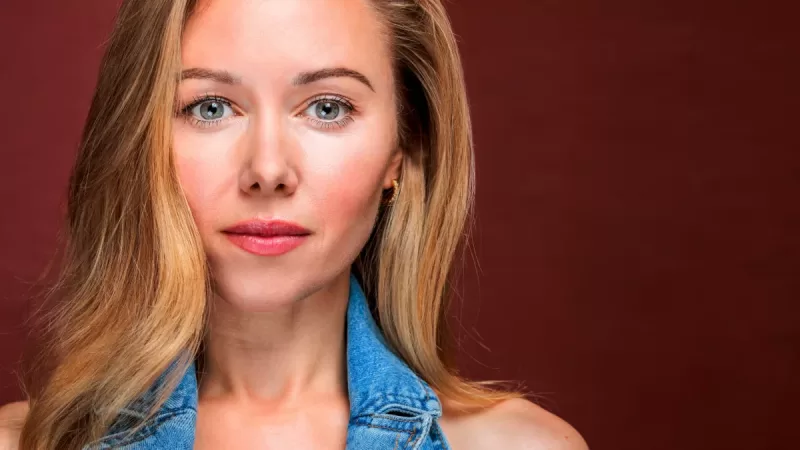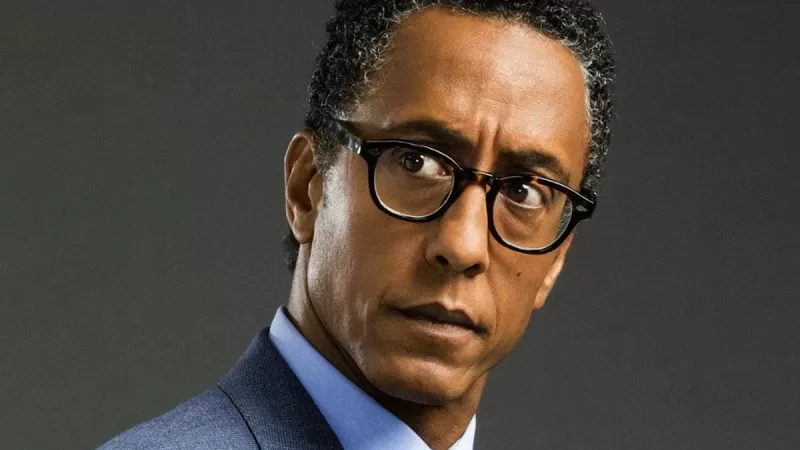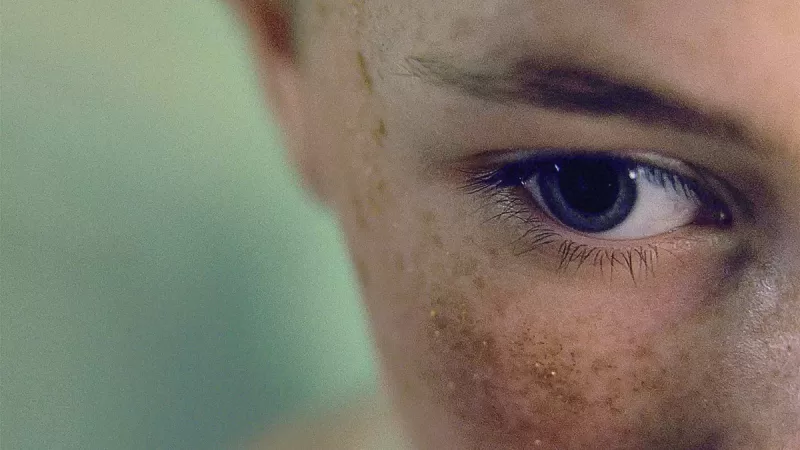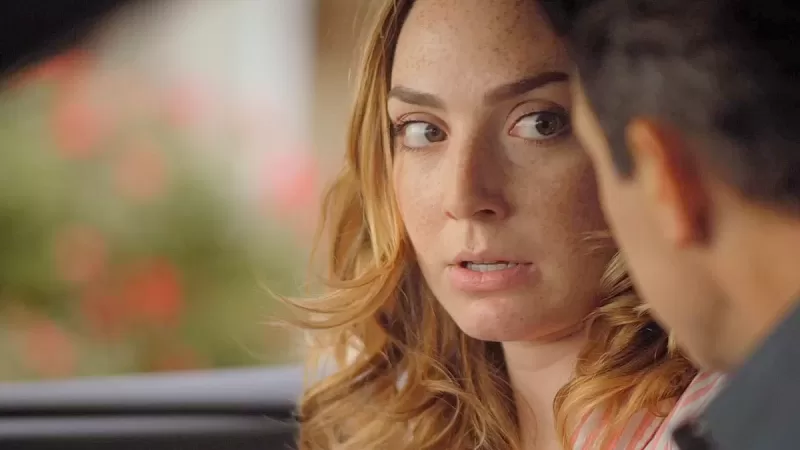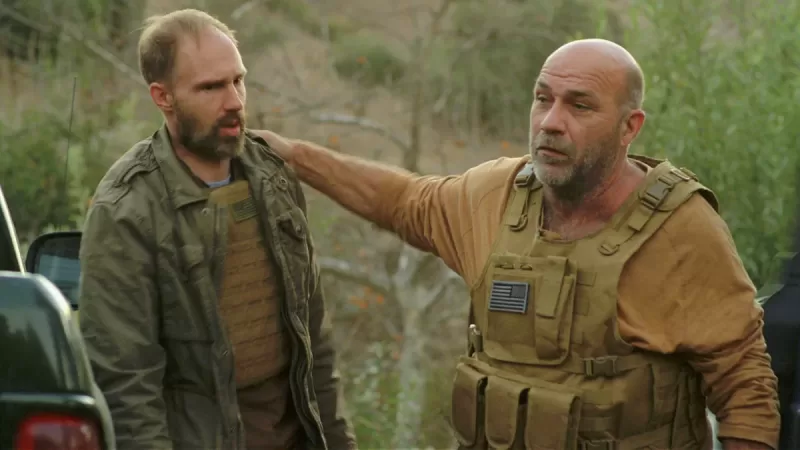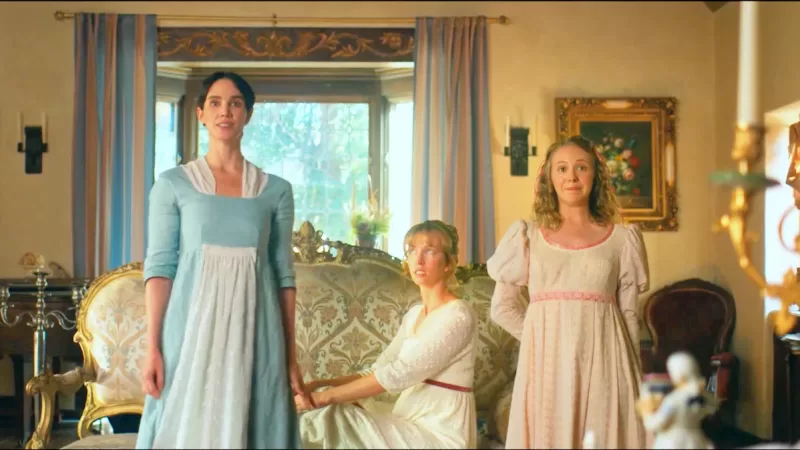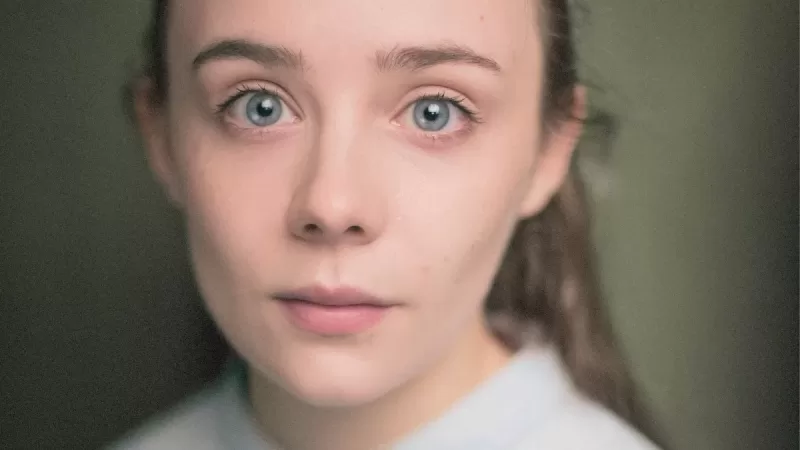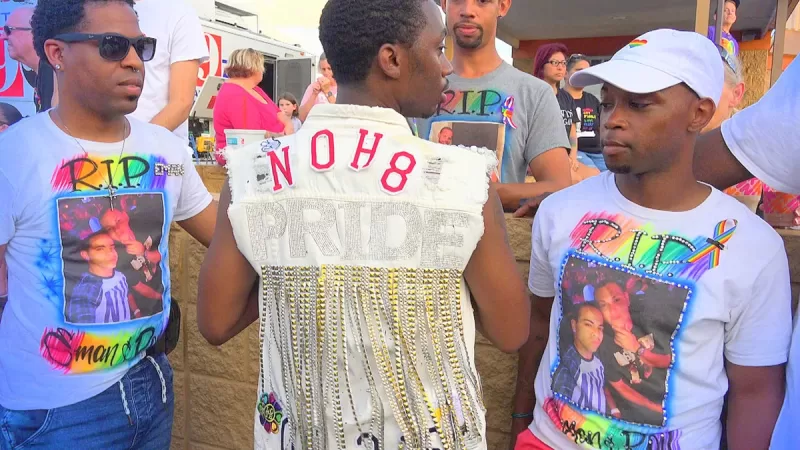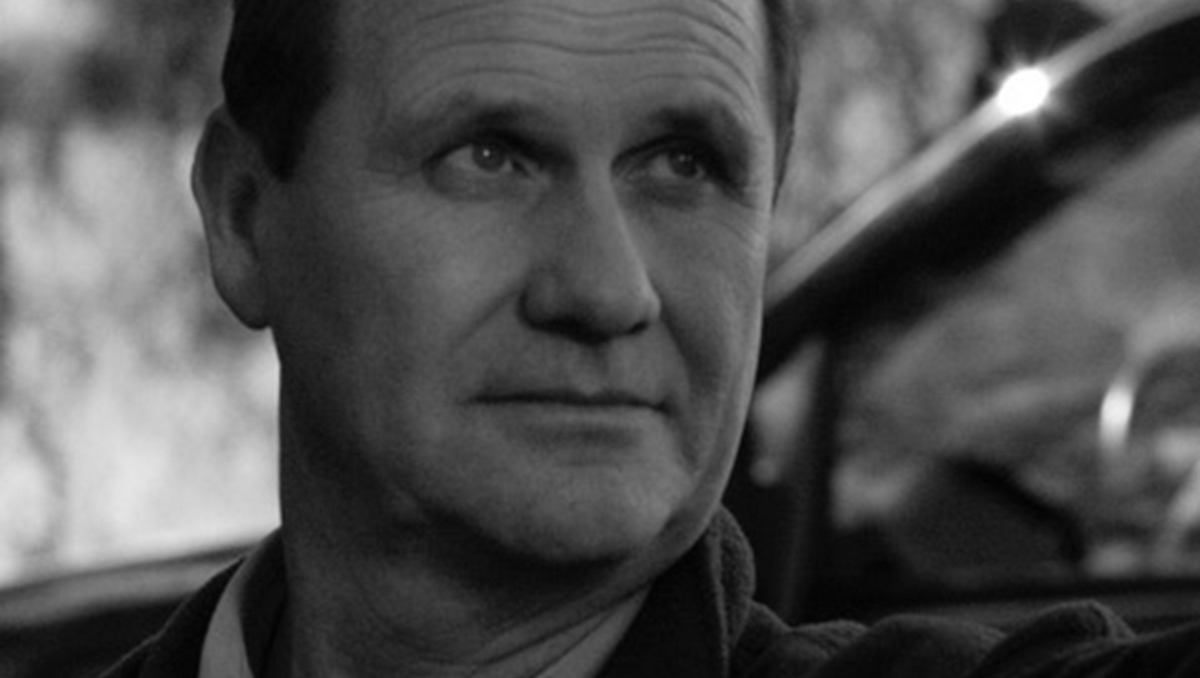
My name is Ross Berryman and I am the cinematographer on the sci-fi short, SOLUS a film that is set in the future and takes place on a desolate planet. It is the story of a search for answers. Our location was high on a remote mountain outside of Cave Creek, Arizona, about 30-40 minutes from Phoenix. For my camera crew I brought in a 2nd AC/digital loader, Grace Thomas, from Los Angeles who was recommended to me and proved invaluable.
I recommended our ace drone pilot/operator, Hrant Jirjees, again from L.A. who did a first class job. In Arizona we picked up a very good 1st AC, Lee Lusby. So essentially we were a 3-man camera crew plus drone operator. Five of the L.A. crew (also our sound mixer, Kirbie Seis, and our swing person, Aaron Haedt) stayed in an adobe ranch house about 20 minutes from the location.
indieactivity (IA): Take us through you preparation for the production of SOLUS?
Ross Berryman (RB): Storyboards for the many visual effect sequences were already underway on SOLUS by the time I came aboard and a lot of our prep in LA involved meetings with the Director Adrian Carr and Producer Rosemary Marks to talk about different production aspects and crew and equipment requirements.
This was an ambitious undertaking with lofty goals but we had enthusiastic support from our actor/producers, Jacob Chattman and Jordan Butcher.
Watch SOLUS TV Series Pilot – A Mythological Sci-fi Adventure Entertainment for Network Syndication
Our Cave Creek location is where Jordan grew up. Adrian had already scouted the Arizona location before I arrived, which was two days before the shoot. On arrival I was given a brisk 4-Wheel Drive tour up the mountain to see the locations followed the next day by a production meeting where all the crew gathered for the first time. The following day we were off and running.
How do you breakdown the script?
Ross Berryman: “Each project is different, but basically reading & re-reading the script in discussion with the Director until you know the material as best you can”, say Ross Berryman. In this case the shoot was separated into two parts – location work in Arizona and a green screen shoot in an L.A. studio.
The script called for a number of different visual looks during the course of the journey that our two protagonist’s take. We were after all on another planet so we wanted it to look unlike the way we experience time changes on Earth. For example, we had scenes labelled single sun low, single sun high, double sun and The Dark. On a technical level, a lot of this would be executed in post or with visual effects but we did shoot a lot at magic hour and some scenes were done Day For Night.
You have a science behind what you do? Do elaborate on this technically?
RB: On most digital productions I usually work with a DIT and a calibrated monitor in a blacked-out tent. But on “SOLUS” where I was operating the camera that luxury was not only not affordable but also not practical given the tricky locations and the speed with which we had to accomplish this.
I kept it simple by only using one compact zoom lens and the Alexa’s built-in ND system and we stripped the Mini down to it’s basics so that it was as minimalistic as possible. When necessary I used my Spectra light meter to determine exposure but I mostly set the lens stop from past experience.
The majority of our work in Arizona was day exterior anyway.
For the Day For Night sequences I lowered the color temperature setting on the camera to around 3200 K and underexposed two stops.
All the exterior day sequences were shot at 5600 K knowing that there would be different looks applied in post production for various times of the day in this other worldly setting. I had to keep in mind that many setups involved a visual effect in one form or another so I did not want to bake any one look into the image in case it needed to be altered in the final edit.
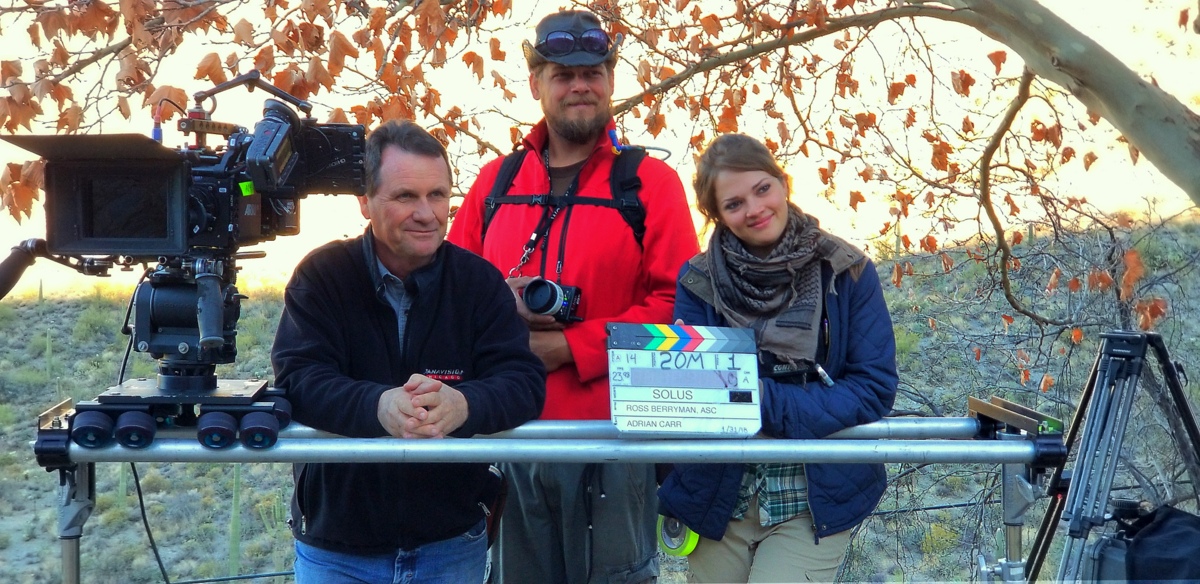
How did you work with your crew on this project?
RB: In Arizona I operated the camera and back in Los Angeles I had Grace Thomas operate A camera. A ‘B camera’ was also employed on the stage day to help continuity in the green screen work especially in scenes using multiple actors.
During production, what scene was the hardest to shoot?
RB: No one scene was hard, they were all equally challenging. The toughest part of shooting SOLUS was making each of our six days; five in Arizona and one in LA. We shot exteriors and cave interiors in Arizona at the end of January. The weather was best then, not unbearably hot, but the days were short and each morning we had to load all our equipment and people into 4×4 vehicles for the half hour trek up the mountain before sunrise. The one day in L.A. was on a small green screen stage that measured approx. 20’x20’ where we had more than 60 setups to complete. That kept us busy.
What works in SOLUS that might not have worked so well in the last film you did?
RB: Essentially, we approached the filming on SOLUS as a guerrilla-unit with minimal crew and just the very basics of equipment. There was no room for luxury items. It was a great experience because everyone pitched in and helped. This approach suited SOLUS and made it feel more like a family affair and because of that it was very rewarding. Everyone was inspired to deliver their best. On bigger shows (that I normally work on) you tend to be more of a cog in a big wheel and important as that role is you feel like you are part of a machine.
Can you tell us what went into lighting and shooting this science fiction pilot?
RB: On SOLUS we were a run-and-gun unit. In Arizona I took two 1’x1’ LED Light Panels that ran on batteries and we had a small portable Honda generator as a backup with some long cables to help sound. These units I only used for the cave interiors. Plus, a store-bought LED flashlight for off-camera use in one scene in a cave. Exteriors were available light and some white bounce boards that our grip used for close-up fill. On the green screen stage back in Los Angeles I added one more Light Panel plus a small 300W incandescent fixture. That was the extent of my lighting.
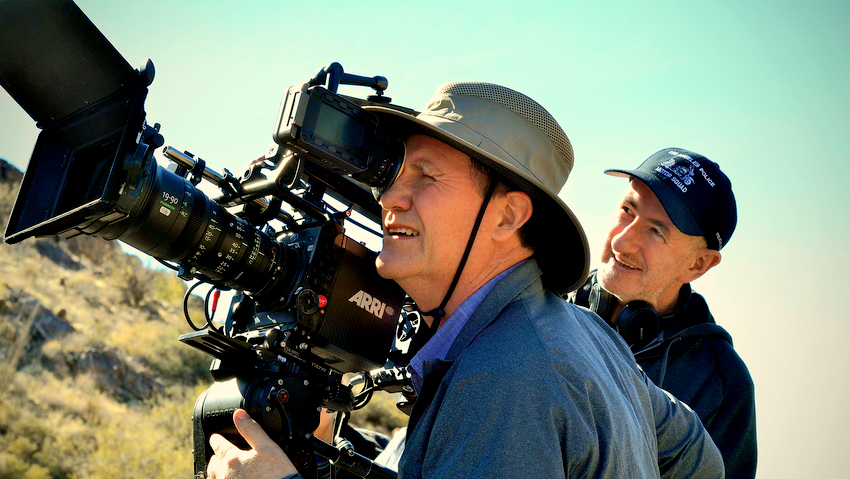
Is there anything about cinematography in the independent filmmaking business you still struggle with?
RB: Independent filmmaking is often collaborative filming at its most intense because you end up wearing many hats to get through a project but it is extremely satisfying when you pull it off. You know going in that you have limited time and funds to get the job done and still come up with a production of high standards.
What do believe your strengths are as a cinematographer?
RB: I have been a cinematographer a long time and with experience you bring a lot to the table. I began my career on small crews in the 1970’s in Australia where ingenuity and inventiveness was key. Over the course of a career you end up working on many varied projects but it always best to remember your roots. Keeping things as simple as possible has always been my goal no matter how big the undertaking.
Tell us about your gear on this project.
RB: We shot “Solus” with an Alexa Mini in wide screen format using primarily a 19-90mm Fujinon zoom for the simple reason of speed. We simply did not have the time or personnel to be constantly changing lenses. We shot ProRes 4444 because of the extensive visual effects that we knew we had in the film. The final running time was 45 minutes which incorporated more than 500 VFX shots.
We did some hand-held work but most of the time we used the camera on a Dana Dolly which is a 4’ sliding rail system that the camera operator adjusts. Our other main camera platform on location was a drone which not only featured heavily in the story but also enabled us to ‘open up’ the visuals which aided the film enormously.
Which scene was the most memorable to shoot?
RB: Sometimes the most memorable scenes can be the simplest. The scene where our two heroes are climbing up a sheer rock face and have a close encounter with a drone was fun to shoot. For the wide shots the actors did their own climbing but for the close coverage where they are frozen in space and hanging on for dear life so that the drone will not see them we reverted to the old fashioned trick of placing the actors on flat ground and turning the camera 90 degrees while a crew member threw small rocks and some dust past camera. Totally believable…and safe!
How would you have shot this project if your budget was 3x the figure?
RB: On location in Arizona I would not change much in the way we shot it as many of the locations were not easily accessible and a much bigger crew would have been a handicap. However, back in L.A it would have been a plus to have a larger stage space for the green screen work with a proper overhead grid, and a little more time in the schedule to shoot, as well as having a visual effects supervisor to advice and record our set-ups. Also some extra manpower. My gaffer, Ed Maloney, who has worked on big features, was fantastic but here on the green screen stage he was a one-man band.
How did you collaborate with the director on the project?
RB: My close friend, Director, Adrian Carr, called me to see if I might be available to help him out on a short film that sounded very ambitious in concept and execution. I knew he would be well prepared and I was eager to work with him again so I jumped on board. I have a strong working relationship with Adrian that goes back to our early days in Australia in the 1970’s when we started out in the film industry at the same time. Our long history and on-set shorthand helped us speed through a very complex shoot. Adrian is extremely well organized and a very capable storyboard artist. SOLUS was well planned in all respects. I know Adrian had the finished movie already shot in his head before we started filming.
What do you hope audiences get from your work on this film?
RB: If our work on this project comes across as something a little different yet engaging in both story and character, and enables the producers to tell the complete story arc in a future series that would be wonderful. It certainly was a lot of fun to make and I think the hard work by all shows through. It looks and feels like a much bigger budget than we had.
What else have you got in the works?
RB: I am currently (until the pandemic shut all production down) involved in Season 2 of the Apple+ streaming series, For All Mankind, which is being produced over at Sony Studios in Culver City. It gives an alternate take on the 60’s space race between the U.S. and Russia. Big budget sci-fi/fact.
Tell us what you think of the interview with “Ross Berryman” What do you think of it? What ideas did you get? Do you have any suggestions? Or did it help you? Lets have your comments below and/or on Facebook or Instagram! Or join me on Twitter @oladapobamidele
Escape by Howard J. Ford stars Sarah Alexandra Marks from Saban Now Out on VOD
Actress Sarah Alexandra Marks stars of a Saban action/thriller titled Escape
Andre Royo to Deliver Keynote Address at Beyond Hollywood Int’l Film Festival Awards Night
Andre Royo is at Beyond Hollywood Int’l Film Festival Release April 28th, 2024
CLODAGH Directed by Portia A. Buckley is an Official Selected Short at Cleveland
CLODAGH has been selected for the prestigious Cleveland International Film Festival
Stargazer by Alan McIntyre. A Spellbinding Tale of Science, Seduction and Betrayal Debuts April
Stargazer Gets Digital Debut for North American VOD Platforms and DVD on April 30, 2024
Day Labor by R. Ellis Frazier, Action Thriller Gets May Release
Freestyle Digital Media Acquires Action Thriller “Day Labor” For May Release
Jane Austen’s Period Drama Wins Audience Awards at Cleveland International Film Festival
Julia Aks and Steve Pinder’s Whimsical Comedic Short Wins The Audience Choice Award
Thomasin Lawson, Joins Honor Swinton-Byrne and Greta Bellamacina on “All Five Eyes”
Alta Global Media on board to Executive Produce the US/UK Co-Production
Exclusive Interview with Aleesha Yates on Feature Documentary, “Surviving Pulse”
Aleesha Yates is a driving force behind making “Surviving Pulse: Life After a Mass Shooting” feature doc.

